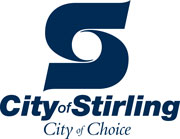Victorian Institute of Teaching
“Whatever changes come along, we know that technology is not going to be the thing that will impede us. It will enable us.”

A digital platform that sets an example for any regulatory body
The Victorian Institute of Teaching deploys a digital platform that sets an example for any regulatory body.
The Victorian Institute of Teaching (VIT) manages the registration and regulation of teachers across the state of Victoria. The VIT also supports beginner teachers entering the profession and approves initial teacher education and pathway programs that prepare early career teachers for working in Victoria. Furthermore, the VIT investigates and makes findings on instances of misconduct, incompetence or lack of fitness to teach. It’s an extensive remit that involves everything from interpreting legislation to defining industry-wide initiatives and accrediting education programs; all focused on one goal: creating safe and effective learning environments.
“Ultimately, we're a Teacher Regulation agency,” said Niall Beirne, Director at VIT. “Every day, staff across all branches of VIT are doing something that, in one shape or another, facilitates the registration of teachers in Victoria to enable quality teaching and provide for the safety and wellbeing of children and young people, and that job would be impossible without having adequate technology to manage it.”
VIT defines “the right technology”
There are more than 140,0000 registered teachers in Victoria who are required to renew their registration each year in order to continue teaching. And those 140,000+ teachers must submit specific paperwork based on different criteria; new registrants are required to confirm their identity and submit documents for background checks; an in-depth criminal history check occurs at the five-year mark, and another revalidation of identity occurs at the ten-year mark. Depending on the registration category and the individual’s circumstances, the required documentation can change, including for teachers who have lived or studied overseas and for those pre-service teachers who have been an invaluable resource to schools during COVID-19.
“So you can see that the 140,000 number really multiplies in terms of system transactions,” said Beirne. “We’re also navigating through many legislative changes – big and small - which impact how we operate as a regulator. If we don't have the right technology that enables us to accommodate and pivot, we aren’t able to properly discharge our regulatory functions.”
Thus, the team set out to define what the “right technology” was for VIT, looking for a business operations platform that could:
- Scale to manage the number of transactions and programs — something that could digitise and automate workflows in a way that is genuinely enterprise level.
- Integrate processes and workflows in real-time. “Teachers already have to submit a high volume of information. If we didn’t have a way to easily share this across branches, we would be creating additional rework for us, the teachers and their employers,” said Beirne. “And some of the information can’t wait for manual data transmission or paperwork delivery.”
- Adapt and evolve with the industry. In addition to the aforementioned legislative changes, Beirne and the team’s work involves a considerable amount of PII, and so needs to stay a step ahead of emerging data security threats. They also work in a space that has been especially impacted by COVID-19, and therefore need to make new programs and resources readily available in order to help classrooms adjust to sudden, foundational shifts.
And they found their answer in the cloud.
Introducing an enterprise-level digital business operations platform
Beirne and team launched Nexus, an enterprise-wide business management platform, on the Salesforce Customer 360 for Government. It gives VIT the tools it needs to:
- manage self-serve application submissions, suitability and qualification assessments, identity validations, email and phone communications storage and more via a single, consistent user experience on the front end...
- ...without sacrificing the ability to configure workflows to fit the unique needs of a given program or process on the backend.
“We called it Nexus because it became the nexus for change — the pivotal point around which everything revolves. And we almost talk about this system like a person at times. It's another valued business partner that sits at the table regarding our decision-making,” Beirne laughed.
Here’s how Nexus works:
- Teachers are invited to create a profile via an online portal built on Experience Cloud. Here, they can input their information, submit any required documentation, check for updates in status, browse training resources, and more.
- As teachers submit an application, their information is stored in a profile-like record on the backend in Service Cloud. VIT uses this to review an applicant, assign the next steps to various team members, tag subject matter experts from one program to the next, and move a case through to resolution — all from a single source of information.
- Messaging was layered on, giving VIT a live chat function to ask and answer questions in real-time of internal colleagues. Marketing Cloud’s Email Studio and Datorama were also added, integrating digital communications and dashboards so that the team can operationalise outreach efforts and see which programs and messages best resonate with the teaching community.
- Shield brings an additional layer of security to Nexus. Sandbox provides a test environment for the team to try out new applications before pushing them live to the broader user base, and Mulesoft connects the platform to third-party systems.
Best Practices from the VIT
VIT’s results turn strategy into action
Beirne and team were about six months into their 12-month timeline when COVID-19 hit. Like so many organisations, the team had to vacate the premise and manage the remaining six months of the deployment remotely. And they did it. “We were able to work seamlessly from anywhere. We even had a person working in New Zealand for some time whilst supporting their family. Being forced to work remotely facilitated us finding an integrated, cloud-based telephony system, which has helped maintain service continuity during subsequent COVID lockdowns, and has generally transformed our view of work. We probably accelerated three years in just six weeks’ time in terms of our competence and confidence in using technology when we were compelled to work from home.”
Additional results include:
- 8 application types are managed
- 4 systems integrated internally, and MuleSoft connects even more external systems
- Initial registration, including our new graduates, experienced a 72% improvement in days it took to register
- Teachers moving from provisional registration to ‘full’ registration experienced a 40% improvement in days it took to register
- Being able to dynamically manage our resources resulted in response rates increasing to 97.42% (period July to Dec 21)
“Whatever changes come along, we know that technology will not be an impediment. Rather It will enable us —allow us to work more efficiently within whatever environment we find ourselves in, assist us to spend more time with stakeholders, and support us to focus on the engagements that matter most to teachers - and therefore, the most to Victorian learners,” said Beirne.
Keep exploring stories like this one.
Questions? We’ll put you on the right path.
Ask about Salesforce products, pricing, implementation, or anything else — our highly trained reps are standing by, ready to help.












